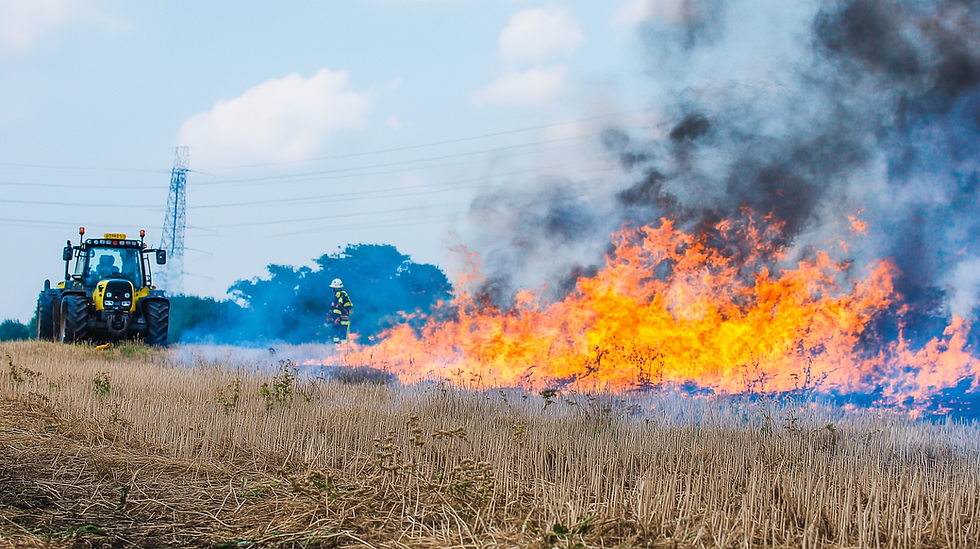Scorching Heatwave Deepens Grower Crisis across the UK
- Sarah-Jayne Gratton

- Aug 14
- 2 min read
The continuing heatwave has pushed temperatures close to 34°C, compounding the strain on farms already battling drought and reduced yields.

An amber heat health alert was in place yesterday (Wednesday 13 August) for the West Midlands, East Midlands, South East, London, and the East of England, with much of the rest of the country under yellow alerts. The prolonged hot, dry conditions are worsening drought across key food-producing regions and raising concerns over the resilience of this year’s harvest.
Five areas remain officially in drought, with six more experiencing prolonged dry weather following the driest January–July period since 1976. The National Drought Group — comprising the Met Office, government departments, regulators, water companies, the National Farmers’ Union, and conservation experts — has described the situation as a “nationally significant” water shortage.
On Wednesday, temperatures reached 33.4°C in locations including Northolt, Oxfordshire, Herefordshire, and west London. While today is expected to be slightly cooler, forecasters warn that very hot conditions could return by Friday, particularly in the South East.
Farmers are reporting mixed harvest results, with cereals, oilseed rape, potatoes, and soft fruit among the crops hit by the combination of heat stress and restricted irrigation.
In some areas, growth is stunted and fruit size reduced, while vegetable producers face shorter picking windows as crops wilt more quickly.
Minimal grass growth has forced many livestock farmers to draw on winter feed reserves far earlier than normal, increasing the likelihood of higher feed costs later in the year. This could raise production costs across the supply chain and put upward pressure on food prices in the months ahead.
With depleted water reserves, sustained heat, and reduced yields, sector experts are urging greater investment in water storage, more efficient irrigation, and long-term drought planning. Without such measures, agriculture will remain highly vulnerable to increasingly frequent swings between extreme drought and flooding.
Last summer’s heatwaves brought widespread disruption and contributed to more than a thousand excess deaths. This year, the agricultural toll is already evident — shorter harvests, lower yields, and the risk of reduced availability of certain British-grown produce.






Comments